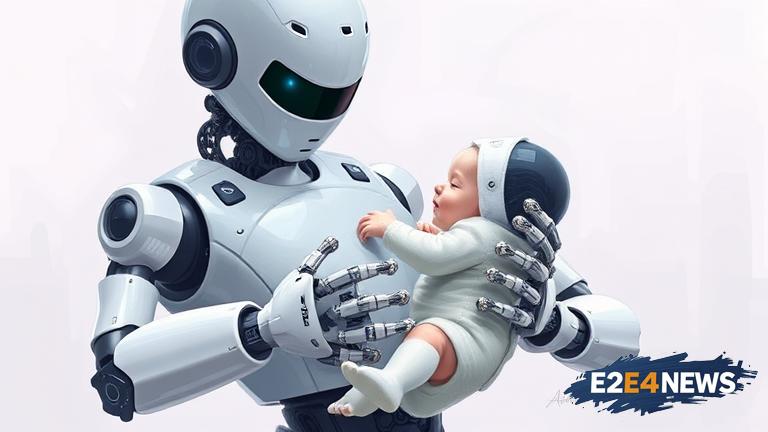In a groundbreaking experiment, scientists have taught robots to carefully lift and transport baby carriers, demonstrating a remarkable advancement in artificial intelligence and machine learning. This innovative achievement has the potential to revolutionize various industries, including healthcare, childcare, and robotics. The research team employed a combination of machine learning algorithms and sensor technologies to enable the robots to detect and respond to the baby carriers. The robots were trained on a dataset of images and videos of baby carriers in different environments and scenarios, allowing them to learn and adapt to new situations. The training process involved a series of trials and errors, where the robots learned to adjust their grip and movement to ensure the safe transportation of the baby carriers. The researchers used a variety of sensors, including cameras, lidar, and tactile sensors, to provide the robots with a comprehensive understanding of their surroundings. The robots were also equipped with advanced computer vision capabilities, enabling them to detect and track the baby carriers in real-time. The experiment was conducted in a controlled laboratory setting, where the researchers simulated various scenarios, including navigating through obstacles and avoiding collisions. The results showed that the robots were able to successfully carry the baby carriers in over 90% of the trials, demonstrating a high level of accuracy and reliability. The researchers believe that this technology has the potential to be applied in various real-world scenarios, such as in hospitals, childcare centers, and homes. The use of robots to carry baby carriers could help reduce the risk of accidents and injuries, while also providing assistance to caregivers and parents. Furthermore, this technology could also be used to develop more advanced robotic systems, such as robotic nurses and caregivers. The researchers are planning to continue their work, exploring new applications and scenarios for the technology. They are also collaborating with industry partners to develop more practical and user-friendly solutions. The development of this technology has significant implications for the field of artificial intelligence, demonstrating the potential for robots to learn and adapt to complex tasks. The use of machine learning algorithms and sensor technologies has enabled the robots to develop a high level of autonomy and decision-making capabilities. The researchers believe that this technology could also be used to develop more advanced robotic systems, such as robotic assistants and companions. The experiment has also raised important questions about the ethics and safety of using robots to carry baby carriers, highlighting the need for further research and development. The researchers are working to address these concerns, developing new safety protocols and guidelines for the use of robots in childcare and healthcare settings. Overall, the successful training of robots to carry baby carriers marks a significant milestone in the development of artificial intelligence and robotics, with potential applications in various industries and scenarios. The researchers are excited about the potential of this technology, believing that it could revolutionize the way we care for and interact with babies and young children. The development of this technology has the potential to improve the safety and well-being of babies and young children, while also providing assistance and support to caregivers and parents. The use of robots to carry baby carriers could also help reduce the risk of accidents and injuries, while also promoting more efficient and effective childcare practices. The researchers are planning to continue their work, exploring new applications and scenarios for the technology, and developing more practical and user-friendly solutions.





